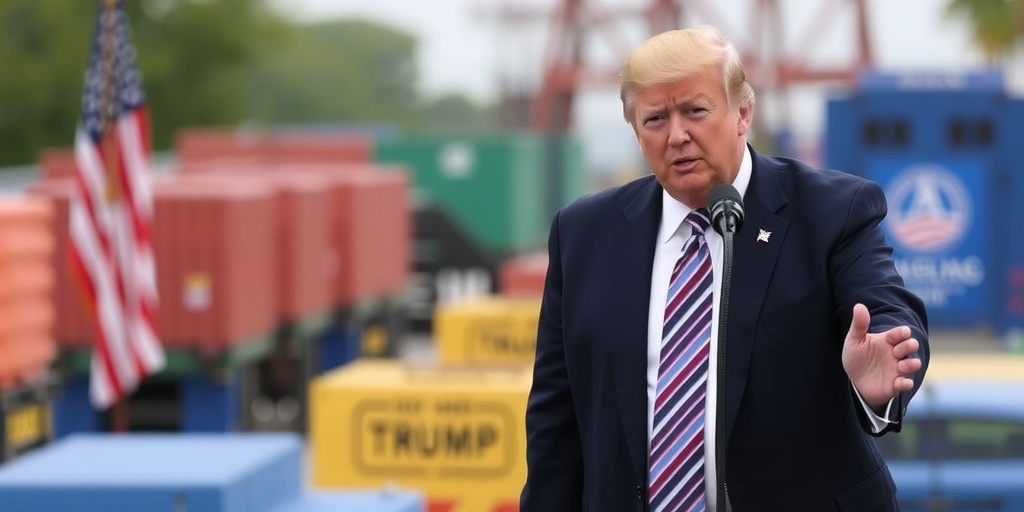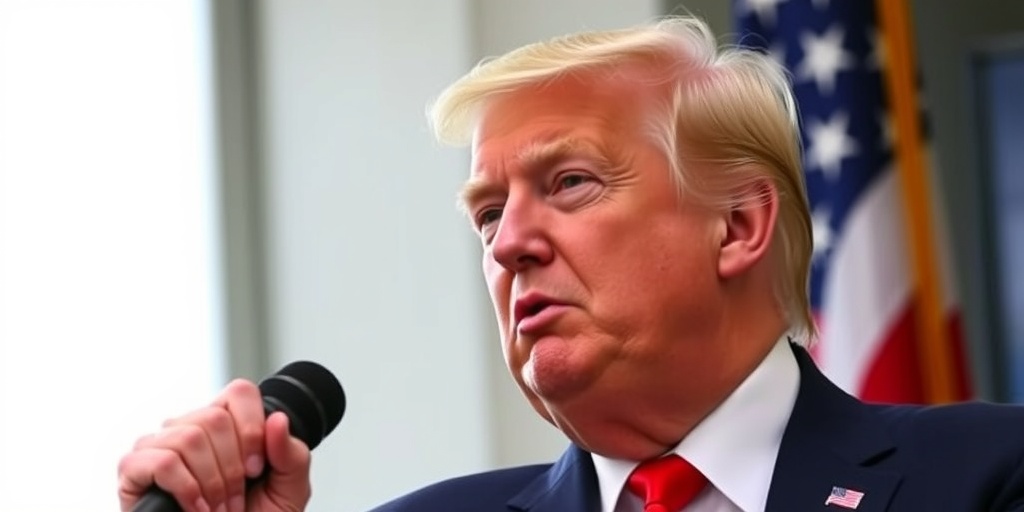Now Reading: Trump Adjusts Tariffs Amid Economic Pressures
-
01
Trump Adjusts Tariffs Amid Economic Pressures
Trump Adjusts Tariffs Amid Economic Pressures

Title: President Trump Adjusts Tariffs Amid Economic Pressures and Business Lobbying
In recent weeks, President Trump has found himself at the center of a contentious trade discussion as he oscillates between imposing tariffs on imports from Canada and Mexico and opting for last-minute delays to mitigate adverse market reactions. A month ago, Trump declared plans for sweeping tariffs on these imports, only to postpone their implementation at the last minute after significant backlash from businesses concerned about escalating costs.
Initially, the tariffs were set to have serious implications for various industries, including the automotive sector, which faced an immediate threat from heightened costs associated with tariffs on vehicle imports from neighboring countries. Following this backlash, Trump announced a monthlong reprieve for automakers, signaling a willingness to adapt his strategy in response to industry concerns. Additionally, on Thursday, he extended broader exemptions for numerous other products imported from Canada and Mexico, a move that reflects the intense lobbying from business groups warning about potential price hikes.
Trump’s approach has highlighted the complexities of using tariffs as a tool for economic policy. He has stated, “There will always be changes and adjustments,” indicating a recognition of the need for flexibility in his policies. Despite his frequent emphasis on the value of tariffs, the ongoing adjustments reveal the challenges that such measures pose, particularly when the economy is showing signs of strain and consumers are grappling with inflationary pressures.
Economic advisors within the Trump administration maintain that the tariffs are a crucial component of a wider strategy that, they claim, would not harm the economy. However, the turbulent reactions from the market and the rising concerns among consumers suggest a growing awareness of the risks associated with aggressive tariff policies. On Friday, Trump himself acknowledged the potential for “a little bit of disturbance” due to the tariffs, a stark contrast to his previous enthusiasm for such measures.
Eswar Prasad, a trade policy expert from Cornell University, articulated the ongoing conflict between Trump’s tariff strategies and economic realities. He explained, “The allure of tariffs as a tool to achieve various economic and geopolitical goals is confronting the harsh truth that they can disrupt domestic production and supply chains, leading to increased prices and possible harm to economic growth.” Prasad’s insights underline the significant adverse effects that tariffs impose not only on U.S. trading partners but also on the domestic economy and financial markets.
As turmoil unfolded in the stock market, with the S&P 500 poised for one of its worst weeks in months, indicators of consumer and business confidence wavered—a trend prompted by uncertainty regarding tariffs and concerns that they could exacerbate inflation. Economists at Goldman Sachs updated their growth forecasts, anticipating that higher tariffs would weigh down economic performance. They warned that “larger tariffs are likely to hit G.D.P. harder through their effect on disposable income and consumer spending as well as their impact on financial conditions and uncertainty for businesses.”
Federal Reserve Chair Jerome H. Powell highlighted that the implications of tariffs would extend to retailers and consumers alike, suggesting that the central bank was watching the situation closely. Historically, the Fed has opted to overlook one-time price increases driven by tariffs, but Powell hinted that multiple shocks could prompt a different course of action.
Trump is expected to roll out reciprocal tariffs on imports from a variety of countries as early as April 2. He has already implemented a 20 percent tariff on all imports from China and hinted that products from the European Union could be next on the list. The backlash from American industries, particularly farmers and metal manufacturers, has intensified. Executives from major automakers such as General Motors, Stellantis, and Ford have expressed that the tariffs would devastate their profit margins by imposing billions of dollars in new costs.
Despite suspending some tariffs, Trump’s stance remains firm as he emphasized the need for U.S. manufacturing and expressed satisfaction with the automakers’ responses to the latest developments: “They’re very happy about what’s happening… We want it made here,” he asserted.
Scott Lincicome from the Cato Institute remarked that the administration is beginning to acknowledge the detrimental impact of tariffs which serve as taxes that harm American manufacturers making products in Canada and Mexico for U.S. consumers. He noted, “Everyone talks about American consumers getting hurt by protectionism; this is finally starting to get through to the administration.”
Despite the pushback, Trump’s economic team continues to defend the tariffs while contemplating ways to mitigate their impact. Treasury Secretary Scott Bessent, speaking at the Economic Club of New York, posited that tariffs could lead to “a one-time price adjustment,” although he acknowledged that businesses need time to adapt to such changes.
Michael Faulkender, the nominee for deputy treasury secretary, echoed these sentiments, arguing that fluctuations in currency and price adjustments by Canadian exporters could alleviate some burdens placed on American consumers.
As pressure mounts from lobbyists and tensions in the market continue, expectations remain about Trump’s future tariff actions. While the adjustments made this week offer a glimmer of hope to some investors suggesting potential restraint, Kevin Hassett, director of the National Economic Council, cautioned against overestimating the likelihood of Trump abandoning his aggressive tariff strategies altogether. “He really doesn’t like the word ‘exemption,’” Hassett noted, indicating that future moves are still uncertain.
With the ongoing negotiations, market reactions, and pressure from various stakeholders, the effects of Trump’s tariff policies continue to unfold, raising important questions about the broader economic impact and sustainability of such approaches in an increasingly complex global trade landscape.
Stay Informed With the Latest & Most Important News
Previous Post
Next Post
-
 01New technology breakthrough has everyone talking right now
01New technology breakthrough has everyone talking right now -
 02Unbelievable life hack everyone needs to try today
02Unbelievable life hack everyone needs to try today -
 03Fascinating discovery found buried deep beneath the ocean
03Fascinating discovery found buried deep beneath the ocean -
 04Man invents genius device that solves everyday problems
04Man invents genius device that solves everyday problems -
 05Shocking discovery that changes what we know forever
05Shocking discovery that changes what we know forever -
 06Internet goes wild over celebrity’s unexpected fashion choice
06Internet goes wild over celebrity’s unexpected fashion choice -
 07Rare animal sighting stuns scientists and wildlife lovers
07Rare animal sighting stuns scientists and wildlife lovers





















